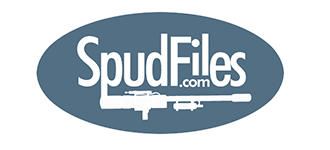To answer that one simply has to understand how a piston valve works. It remains closed until the pressure in the pilot area drops enough to unbalance it so the force holding it closed is less than the force trying to open it.mlz3000 wrote:Alright, that's what I thought, thanks.
While we're kind of on the topic though, what's the biggest piston valve one could make where a blowgun would be sufficient as a pilot valve? Or would it just almost always better to use a ball valve?
Would a sprinkler valve modded with a blowgun perform appreciably better than one with a blowgun?
In order to get the pilot area pressure low enough, the pilot valve vents that area. The larger the volume and the lower the flow of the pilot valve, the longer this takes.
If the piston has some leakage either intentionally or accidentally due to an EQ port or piston blow by, air is added to the pilot area at the same time you are trying to let it out. If the leakage is large, the blowgun will be unable to drop the pressure enough to unbalance the piston and the chamber will bleed out to the pilot without firing.
If the leakage is sealed or very small, a small blowgun will be able to pilot very large valves, but it may take a while to vent the pilot area low enough to fire.
Because most piston valves leak some between the chamber and pilot area, taking a long time to vent the pilot area provides longer time for air to leak out of the chamber into the pilot area resulting in the pressure dropping in the chamber before the cannon fires. For this reason it is a good idea to use a faster flowing pilot valve. Less pressure is lost from the chamber before it fires.
I hope this answers the question.







